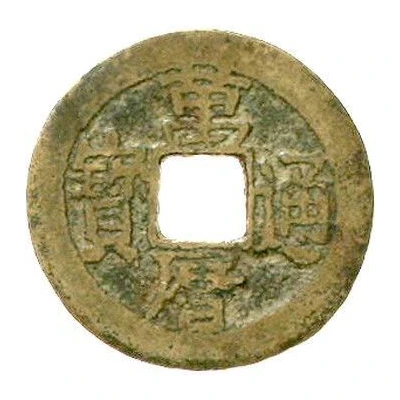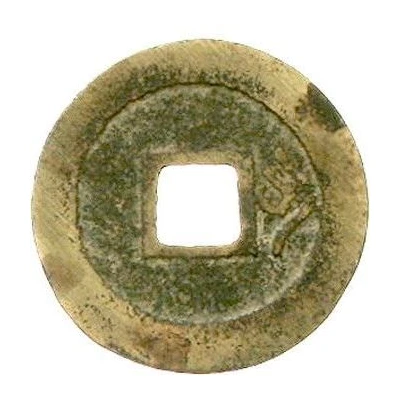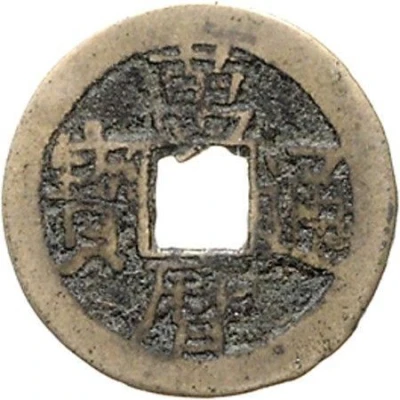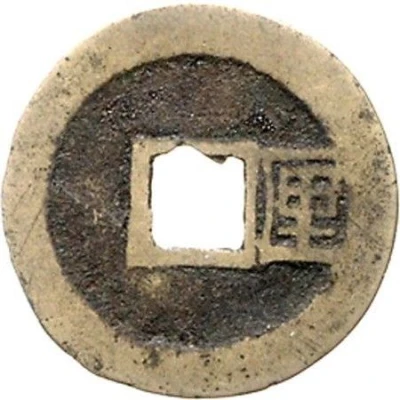


© Teutoburger Münzauktion
1 Cash - Wanli Tongbao; small size; with Qian ND
| Brass | 1.56 g | 22 mm |
| Issuer | Empire of China |
|---|---|
| Emperor | Ming dynasty › Wanli (明神宗) (1572-1620) |
| Type | Standard circulation coin |
| Years | 1576-1620 |
| Value | 1 Cash |
| Currency | Cash (621-1912) |
| Composition | Brass |
| Weight | 1.56 g |
| Diameter | 22 mm |
| Shape | Round with a square hole |
| Technique | Cast |
| Orientation | Medal alignment ↑↑ |
| Demonetized | Yes |
| Updated | 2024-10-04 |
| Numista | N#222257 |
|---|---|
| Rarity index | 100% |
Reverse
One (abbreviated) Chinese ideogram to the right.
Script: Chinese (traditional, regular script)
Lettering: 錢
Translation:
Qian
Weight
Edge
Plain
Comment
These pieces are official issues, but while they are much smaller than regular issues, they are considered to be 1 Cash pieces. The exact purpose of these pieces is unclear.While casting was stopped at the last emperor's death in 1572, it was resumed again in 1576 at the Peking and Nanking mints. Soon after, mints in Yunnan, Shanxi, Shandong, Henan, Shaanxi, Jiangxi, Fujian, and Huguang were also opened. However, due to poor circumstances, the Wanli coins were a failure, and by 1582, all mints except for Huguang closed. There was an attempt to open mints in 1599, including opening a Board of Works in Nanking, although so many coins were produced there that casting was cut back, and other mints were closed.
Interesting fact
One interesting fact about this coin is that it was issued during the reign of the Wanli Emperor, who ruled the Ming dynasty from 1572 to 1620. During his reign, the Ming economy experienced significant inflation, which led to the introduction of this smaller, lighter weight version of the cash coin to address the need for a more practical and affordable form of currency. Despite its smaller size, the coin still maintained its value and was widely used throughout the empire.

